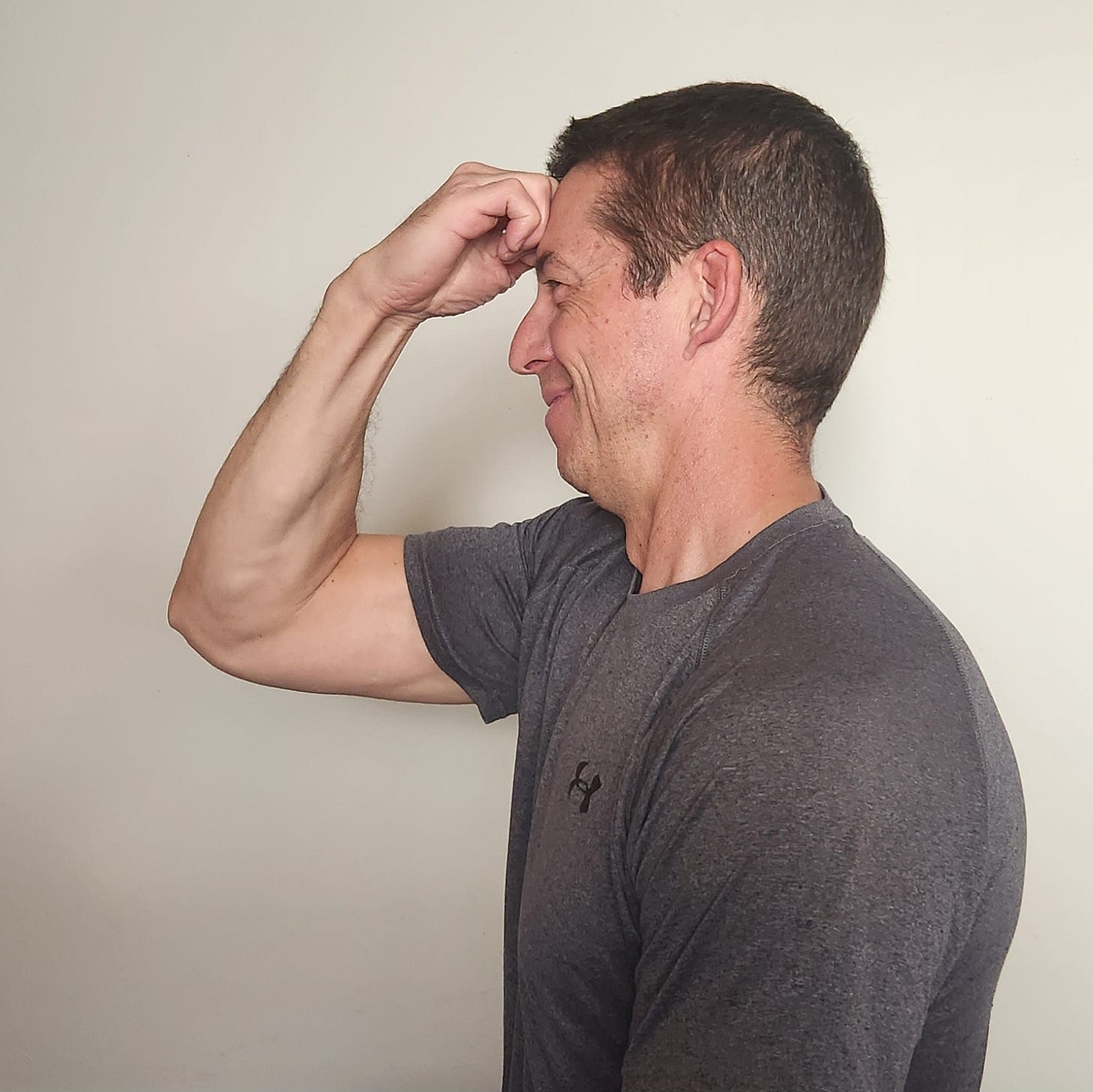You're a pain in the neck
This is not medical advice.
Oh sorry, you have neck pain. I see. Well that’s one of the harder conditions to treat. I was searching for typical Western medical pictures of neck pain, and came across this picture. Not sure it has anything to do with what I’m talking about, but yet another example of how amazing our bodies are, how much they will adapt to their surroundings, and our perception of pain.
I can’t tell you what to do with your neck pain. I am going to share what I’ve witnessed in neck pain cases.
I like to think of the neck as a tower, blocks sitting on top of each other. Ideally there is a curve, slightly to the front, similar to the lower back. Nerves come out between the blocks, some pass down through the shoulders and arm pit.
Generally I see two types of neck pain; muscular and neurological. Many times they are combined.
If the problem is only muscular, that is ideal. It is difficult to work neck muscles directly, like we do other muscles in the body. There are devices where we can hang weights from the head, and work the neck. Most patients would not tolerate this.
The shoulder and the neck share some of the same muscles, attaching to both. So sometimes in a round about way, we can work neck muscles by exercising the shoulders. Movements like shrugs and rows will work the neck indirectly. Maybe that’s the way it supposed to be. If we were meant to exercise the neck muscles directly, there would be appendages coming out of our skull.
The other more serious problem with the neck, is when nerves are irritated or pinched due to structural or alignment issues. The neck posture, and blocks (vertebrae) are pushing on a nerve root.
Much of this is prevention. I am as guilty of this as anyone, looking down at a phone or book. We need to raise the item we are looking at.
Muscle stabilization
I wasn’t always a fan of isometrics, but have realized that this is the majority of our stabilizing force. Isometric muscle contraction is when the muscle fires or contracts, yet the joint doesn’t move.
So anyone can use isometrics to strengthen the neck, and possibly decrease pain. There is some argument that the muscle tone will help improve the alignment of the neck vertebrae.
There should be no pain when completing these. If there is pain, you are pushing too hard, or these are not for you. These are gentle muscle contractions, repeated many times. A typical home exercise program is two sessions per day, 10 repetitions of a 10 second hold in each posture. Isometric directions are a 6-7 second hold, but I find that most people count too fast. Just count to 10.
I like to have people push into the towel in the last picture, as some people have a very flat neck, which is part of the problem. You can support the correct curve in the neck, and push isometrically into the table or bed.
Chin tucks are a common exercise prescribed, however I do not think they are for every neck. Some people already have a flat curve, and retracted neck, and are still given this exercise. This posture needs to be evaluated in person. Your provider may not be looking at your x rays, only reading the report. You should look at, and understand your own imaging.
Stretching and traction
Over the years I was told by the industry to stretch the neck to fix neck pain. Not sure if I believe this now. I have never stretched someones neck, or had them receive manual or device traction, and had them come back and say that they were pain free.
Stretching may be necessary for some issues. Especially range of motion when driving.
I think the neck pain is now similar to low back pain. Once I stopped stretching people’s lower back pain, and worked on muscle stabilization instead, there were dramatic improvements.
An exceedingly simplified explanation is that the spine is a tower that need to remain stable, so that the nerve exits are not impeded. There are some ligaments and other soft tissue, however most of this stability comes from muscle tone.
Massage
I do try to perform 10-15 minutes of massage with each neck patient. Either the neck pain and stiffness is the root cause of their pain, or is contributing to the problem, or will help them tolerate the exercises. If your therapist says it doesn’t work, they might mean that massage is a band aid and not the long term solution. I find massage to be one of the better band aids, especially with neck pain. You can always seek out private massage therapists. Hot packs also tend to help necks feel better, especially arthritic necks.
Chiropractic and osteopractic
Not sure about this, and not an expert by any means. I will just relay that outcomes vary based on what we hear from patients. Our results also vary. Find someone you trust. I like to have people try the isometrics exercises first, for 4-8 weeks, as this is the easiest and least aggressive trial.
Back to that lady in the picture. She looks happy. Ironically, she is under an immense amount of traction with the hoops (not recommending that). She doesn’t look like she has neck pain.
Does she use a fancy pillow? 12 inch mattress and box spring? have a chiropractor or therapist? hot packs? massage? injections? pain meds?
I’m guessing no to all of the above, and probably has no neck pain.
What’s our deal?







